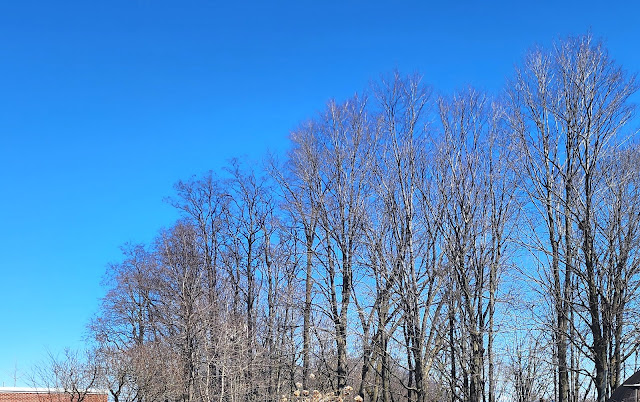It was a beautiful sunny day on Sunday, so after church in the morning we headed off for the afternoon. Our destination was Big Bay, a tiny little ragged village strung out among the trees, on the distant shore of Georgian Bay, some distance north of Owen Sound.
This is the ancient Algonquin glacial lake shoreline, a significant hill to the west of Meaford. After the flat sand plains the apple trees so enjoy, you can't miss it.We had an ice storm here two weeks ago, so on the higher bits of the landscape you could see a fair bit of damage, trees and branches down.
We eventually dipped down over the Niagara Escarpment into Owen Sound. I've never got into the habit of photographing meals, but we did stop at a new pancake restaurant and really enjoyed our meal. Then it was all the way through town and out the west end, turning to head north.























































